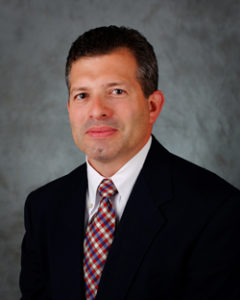Allowing a full 180-degree range of motion on three different planes, the shoulder is a truly extraordinary joint. It is a complex structure made of three separate joints, working together to give you a tremendous range of motion. Yet, it is often true that the more a joint can do, the more can go wrong — and so the more specialized treatment it requires. Florida Orthopaedic Institute physicians have the expertise and experience to provide comprehensive care of the shoulder including nonsurgical treatments, arthroscopic, and open surgeries.
SYMPTOMS & CONDITIONS WE TREAT
When patients suffer from shoulder pain, the cause can be due to any number of conditions. Our specialists help patients find relief from:
The term arthritis literally means inflammation of a joint, but is generally used to describe any condition in which there is damage to the cartilage. Damage of the cartilage in the shoulder joint causes shoulder arthritis.
The cartilage is a padding that absorbs stress. The proportion of cartilage damage and synovial inflammation varies with the type and stage of arthritis. Usually the pain early on is due to inflammation. In the later stages, when the cartilage is worn away, most of the pain comes from the mechanical friction of raw bones rubbing on each other.
The clavicle is the bone that connects your sternum or breastbone to your shoulder. Clavicle fracture, also called broken collarbone is a very common sports injury seen in people who are involved in contact sports such as football and martial arts as well as impact sports such as motor racing.
Burners and stingers are common neck or shoulder injuries characterized by intense burning or stinging pain which can radiate from the neck to the hand. They are caused by sudden movement or a direct blow to the neck resulting in an injury to the brachial plexus. This injury is commonly seen in contact sports such as football, ice hockey, wrestling, and rugby. The brachial plexus is a group of nerves which pass from the neck to the arm that transmit the sensory and motor sensations of the arm. The compression or pinching of the brachial plexus results in pain. It usually lasts for a short period of time after which the symptoms resolve. It may also be associated with numbness or weakness of the affected arm. In a few cases it may last for a longer duration of time. People with a narrow spinal canal (spinal stenosis) are at an increased risk of recurrent burners and stingers.
The diagnosis of burners and stingers is usually made on the basis of symptoms and the nature of injury; imaging studies are usually not required. Most of these resolve without any treatment. However, in a few patients the symptoms may persist longer. In such cases as well as in those with recurrent burners and stingers, immediate medical attention is required to check for any other significant injury. Physical therapy can also be considered in these patients.
Frozen shoulder, also called adhesive capsulitis is a condition characterized by pain and loss of motion in shoulder joint. It is more common in older adults aged between 40 and 60 years and is more common in women than men.
Shoulder fractures occur from a break in one or more of the bones of the shoulder joint. The shoulder is the most flexible joint in the body making it the most susceptible to instability and injury. It is a ‘ball-and-socket’ joint. A ‘ball’ at the top of the upper arm bone, humerus, fits neatly into a ‘socket’, called the glenoid, which is part of the shoulder blade, scapula.
The shoulder joint is made up several bones and soft tissues. It has three bones, the collarbone (clavicle), scapula, and humerus.
Humerus provides attachment to muscles of the upper arm. Scapula is the bone that connects the upper arm bone with the collarbone. It is a flat bone and roughly triangular in shape and provides attachment to the muscles of back and neck.
Erb’s palsy is a condition that causes weakness or paralysis of the arm on one side due to injury to the brachial plexus usually during childbirth. The condition was first described by Dr. Wilhelm Erb.
Playing more overhead sports activities and repeated use of shoulder at workplace may lead to sliding of the upper arm bone, the ball portion, from the glenoid–the socket portion of the shoulder. The dislocation might be a partial dislocation (subluxation) or a complete dislocation causing pain and shoulder joint instability. Shoulder joint often dislocates in the forward direction (anterior instability) and it may also dislocate in backward or downward direction.
Rotator cuff is the group of tendons in the shoulder joint providing support and enabling wider range of motion. Major injury to these tendons may result in tear of these tendons and the condition is called as rotator cuff tear. It is one of the most common causes of shoulder pain in middle aged adults and older individuals.
The biceps muscle, located in the front of the upper arm allows you to bend the elbow and rotate the arm. Biceps tendons attach the biceps muscle to the bones in the shoulder and in the elbow.
Types
Biceps tear can be complete or partial. Partial biceps tendon tears will not completely break the tendon. Complete tendon tears will break the tendon into two parts.
Biceps tendon tears at the shoulder: Two tendons that attach the biceps muscle to the bones in the shoulder, the long head tendon that attaches the muscle to the top of the shoulder’s socket (glenoid) and the short head that attaches it to the shoulder blade. Tears are more likely to occur in the long head of the biceps tendon. Tears of the short head of the biceps are very rare. But even in case of a complete tear of the long head, the short head of the biceps may allow you to continue using your biceps muscle.
Biceps tendon tears at the elbow: Although two tendons attach the biceps muscle to the bone at the shoulder, only one tendon attaches it to the elbow. This is known as the distal biceps tendon. Tears of the distal biceps tendon are usually complete and the muscle is separated from the bone. Tears of the distal biceps tendon most often result from a sudden injury or lifting a heavy object.
Shoulder impingement is the condition of inflammation of the tendons of the shoulder joint. It is one of the most common causes of pain in the adult shoulder. The shoulder is a ‘ball-and-socket’ joint. A ‘ball’ at the top of the upper arm bone, humerus, fits neatly into a ‘socket’, called the glenoid, which is part of the shoulder blade, scapula. Shoulder impingement is also called as swimmer’s shoulder, tennis shoulder, or rotator cuff tendinitis.
The shoulder joint is a “ball and socket” joint that enables the smooth gliding and thereby the movements of arms. However it is inherently unstable because of the shallow socket. A soft rim of cartilage, the labrum lines the socket and deepens it so that it accommodates the head of the upper arm bone better.
Traumatic injury to the shoulder or overuse of shoulder (throwing, weightlifting) may cause labral tear. In addition ageing may weaken the labrum leading to injury. Shoulder labral tear injury may cause symptoms such as pain, catching or locking sensation, decreased range of motion and joint instability.
Pain in the shoulder suggests a shoulder injury and shoulder injuries are more common in athletes participating in sports such as swimming, tennis, pitching, and weightlifting. The injuries are caused due to the over usage or repetitive motion of the arms.
In addition to pain, shoulder injuries also cause stiffness, restricted movements, difficulty in performing routine activities, and popping sensation.
Acromioclavicular joint (AC joint) dislocation or shoulder separation is one of the most common injuries of the upper arm. It involves separation of the AC joint and injury to the ligaments that support the joint. The AC joint forms where the clavicle (collarbone) meets the shoulder blade (acromion).
The thoracic outlet is a small passageway leading from the base of the neck to the armpit and arm. This small area contains many blood vessels, nerves and muscle. When this passageway becomes compressed the condition is termed as thoracic outlet syndrome. This rare condition is characterized by burning pain in the neck and shoulder, numbness and tingling of the fingers, and a weak hand grip. Thoracic outlet syndrome generally occurs within the age group of 20 to 60 years and is more common in females than in males. There are 3 types of thoracic outlet syndrome namely neurogenic thoracic outlet syndrome, arterial thoracic outlet syndrome and venous thoracic outlet syndrome.
TREATMENTS
During this surgical procedure, your surgeon will reposition the broken bone ends into normal position and then uses special screws or metal plates to hold the bone fragments in place. These plates and screws are usually left in the bone. If they cause any irritation, they can be removed after fracture healing is complete.
Shoulder arthroscopy is a surgical procedure in which an arthroscope is inserted into the shoulder joint. The benefits of arthroscopy are smaller incisions, faster healing, a more rapid recovery, and less scarring. Arthroscopic surgical procedures are often performed on an outpatient basis and the patient is able to return home on the same day.
Indications
Arthroscopy may be recommended for shoulder problems such as:
- Evaluation and treatment of instability
- A torn or damaged cartilage ring (labrum) or biceps tendon
- A torn rotator cuff
- Stiffness of the shoulder
- Subacromial decompression
- Arthritis of the end of the clavicle
- Treatment of frozen shoulder
- Removal of loose bodies
- Debridement / drainage of shoulder joint infection
The shoulder is a highly movable body joint that allows various movements of the arm. It is a ball and socket joint, where the head of the humerus (upper arm bone) articulates with the socket of the scapula (shoulder blade) called the glenoid. The two articulating surfaces of the bones are covered with cartilage, which prevents friction between the moving bones. The cartilage is lubricated by synovial fluid. Tendons and ligaments around the shoulder joint provide strength and stability to the joint.
When the cartilage is damaged, the two bones rub against each other resulting in pain, swelling and stiffness of the joint (osteoarthritis).
Total shoulder replacement surgery is performed to relieve these symptoms. In this surgery, the damaged articulating parts of the shoulder joint are removed and replaced with artificial prostheses. Replacement of both the humeral head and the socket is called a total shoulder replacement.
Rotator cuff is the group of tendons in the shoulder joint providing support and enabling wider range of motion. Major injury to these tendons may result in tear of these tendons and the condition is called as rotator cuff tear. It is one of the most common causes of shoulder pain in middle aged adults and older individuals. It may occur with repeated use of arm for overhead activities, while playing sports or during motor accidents. Rotator cuff tear causes severe pain, weakness of the arm, and crackling sensation on moving shoulder in certain positions. There may be stiffness, swelling, loss of movements, and tenderness in the front of the shoulder.
Qualified Providers that Can Help

George H. Canizares, MD
General Orthopedic Surgery & Sports Medicine






